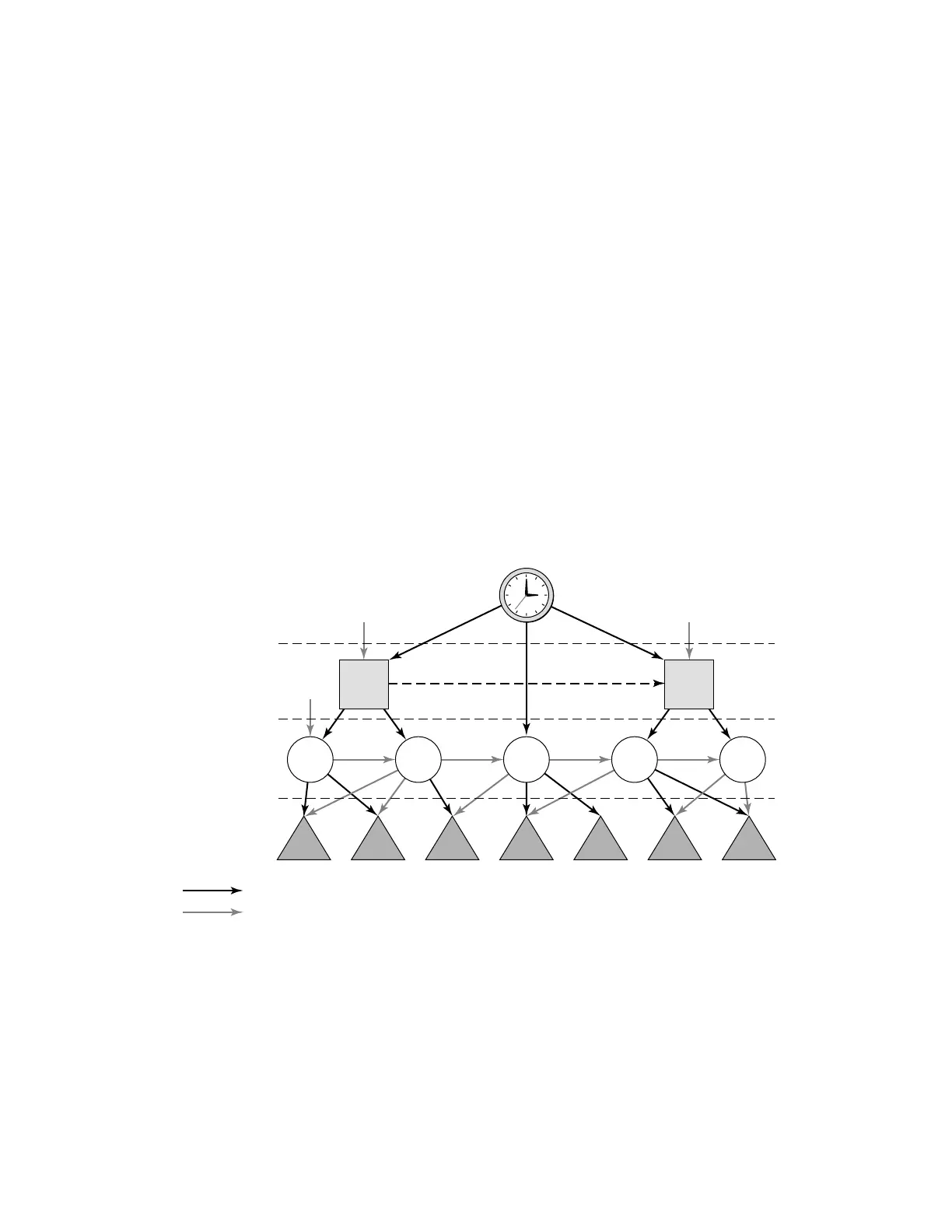System Management
7210 SAS M, X Basic System Configuration Guide Page 161
Network Synchronization
This section describes network synchronization capabilities available on 7210 SAS platforms.
These capabilities involve multiple approaches to network timing listed below:
• Synchronous Ethernet
• Adaptive clocking.
These features address barriers to entry by:
• Providing synchronization quality required by the mobile space; such as radio operations
and circuit emulation services (CES) transport.
• Augmenting and potentially replacing the existing (SONET/SDH) timing infrastructure
and delivering high quality network timing for time sensitive applications in the wireline
space.
Network synchronization is commonly distributed in a hierarchical master-slave topology at the
physical layer as shown in Figure 9.
Figure 9: Conventional Network Timing Architecture (North American Nomenclature)
The architecture shown in Figure 9 provides the following benefits:
OSSG287
ST 2
ST 3 ST 3 ST 3 ST 3 ST 3
ST 2
Primary Reference Clock
Stratum 1
Gateway
Class 1 or 2 CO
ST 4 ST 4 ST 4ST 4 ST 4 ST 4 ST 4
Stratum 2
Class 2 or 3
Central Office
Stratum 3
Class 4 or 5
Toll/End Office
Stratum 4
Customer
Prem
Primary Reference
Secondary Reference

